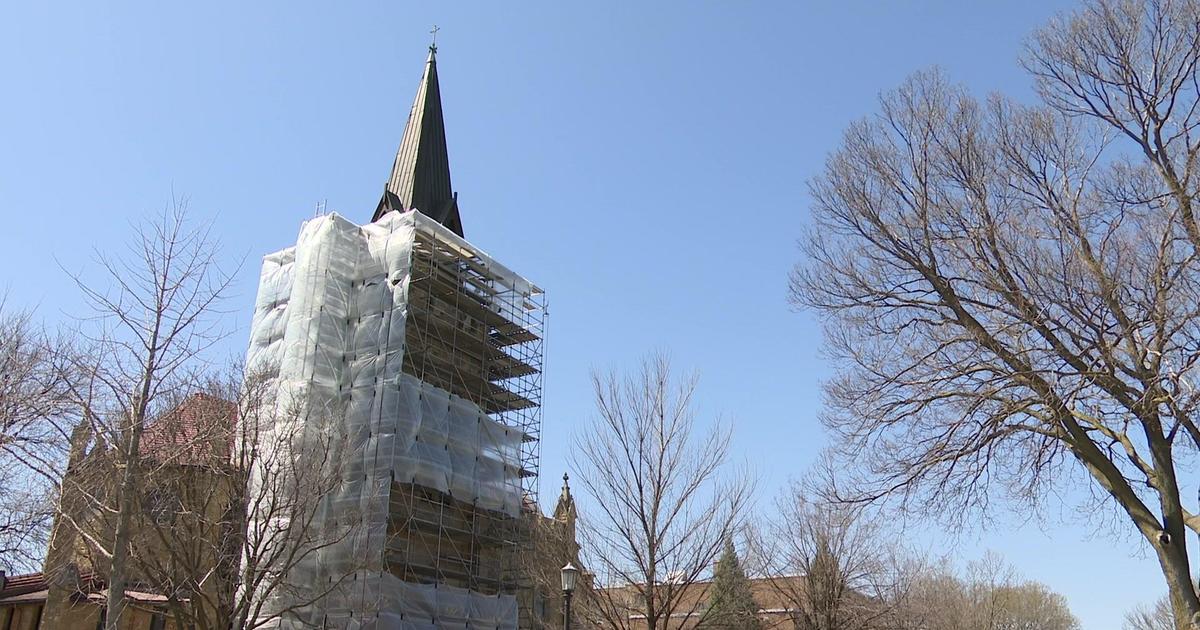'We're Dealing With A New Reality': How Minnesotans Are Creating Infrastructure With Climate Change In Mind
DULUTH, Minn. (WCCO) -- As the sun sets over Lake Superior, there is a new dawn for Duluth's Lakewalk that clings to its coast -- a renovation not out of want but need.
Mike LeBeau, construction project manager for the city, remembers the trio of powerful storms in late 2017 to 2018 tore up the shoreline with speeds of over 100 miles per hour and waves cresting at 25 feet.
Not much was left except $30 million in damages and an opportunity to rebuild better than before.
"We can't be sure we've seen the worst yet of what the lake can do -- what the climate can do to us," LeBeau said.
Years later, the trail traversed by thousands is restored. A special team of engineers strategically placed pieces of rock together like a puzzle, which protects a concrete wall behind it, offering a second line of defense. Together, they are barricades designed preserve the ground beneath the Lakewalk, keeping it from future collapse.
Hopefully.
City officials in Minnesota say a future with climate change is reshaping their thinking about building roads, bridges and in Duluth, the Lakewalk. It's basic infrastructure people who live here use every day, and expect to use for decades more.
State climate projections show more intense rains increasing in our future. State and federally declared disasters are more frequent and costly.
In the last two years, 11 of the 17 major natural disasters in Minnesota were categorized as thunderstorms, according to Minnesota Homeland Security and Emergency Management.
"The cost, severity and number of events is clearly curving up," said Joe Kelly, director for the state agency, which handles emergency response.
Kelly said in the 20 years before 2017, the state averaged about $8 million in disaster assistance it provided to communities. In the last three years, that's increased to $22 million.
"There's no doubt there's more damaging, there's more active weather events in Minnesota," he said.
LeBeau hopes the newly renovated Lakewalk lasts at least 50 years, if not 100.
"But again we don't know," he said. "We could get a storm in five years that's twice as big as anything we've seen before."
Designing Infrastructure For 'Wider Range Of Outcomes'
In Shoreview, there's a stretch of road tucked in between Lake Owasso and Lake Wabasso that's permeable pavement, which absorbs water into grooves it instead of pooling and flowing on top of the surface.
The city began using a similar tactic in a nearby neighborhood a decade ago to boost water quality by minimizing runoff. But since then, there's been an added benefit of stormwater management.
"The last 10 years have shown us that we need to design public infrastructure for a wider range of outcomes," he said. "We had a pretty static idea of how much rain we got and how long the winters were and that's really been challenged in the last 15 years."
In the few corners of the community with where the pavement is strategically placed—it covers about 1.5% of roads -- there's less flooding, said Mark Maloney, director of public works in Shoreview.
Up front, permeable pavement a larger investment than typical concrete on normal roads, he added, but in the long-run maintenance costs less.
And he adds that it endures Minnesota's brutal winters: "As soon as the sun gets on here for any sustained period of time, it just melts away."
Climate change looms large in his industry today, he says, describing the "dramatic" shift in conventional wisdom about how to build public infrastructure and maintain it. City officials like him across the U.S. are balancing the need for investments with a duty to be good stewards of taxpayer money.
But Maloney believes roads and bridge built to last are what the public demands.
"I think the world we live in now -- that the people that live here that are paying for everything -- are expecting us to be thinking this way," he said.
Nearby Robbinsdale spent $320,000 on a system that pumps water out of Crystal Lake, which has no natural outlet, to keep it from flooding. It was a direct response to more frequent and intense rains.
"Almost everything we do with our infrastructure, especially storm sewer, we have to upgrade it now to account for the fact that the dynamics have changed about the maximum events that occur," he said.
Robbinsdale and 15 other Minnesota cities declared a climate emergency, calling on the state and federal governments to commit resources to combatting the problem.
"We need to do more before we reach a tipping point," Blonigan said.
An analysis from a few years ago by the National Institute of Building Sciences found every $1 spent on disaster mitigation saves communities $6.



